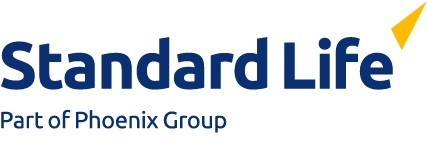
Kieran Mistry, Senior Business Development Manager at Standard Life
Insurance remains the gold standard endgame for defined benefit pension schemes.
With rising funding levels and attractive insurer pricing, demand for buy-ins and buyouts is expected to increase and stay high for years to come. But can supply keep up with demand?
An expanding market
At the start of 2022, many market commentators expected buy-in and buyout volumes to reach the levels seen in 2019 - the busiest year on record. While the headline volume at the end of the year will not reach that level, adjust for interest rate rises (which reduced premiums) and 2022 will come very close.
Over the course of 2022 and heading into 2023, many UK defined benefit pension schemes have seen a material improvement in their funding levels, leading to a surge in demand. This has been driven by a couple of key factors.
The impact of rising interest rates and inflation
Over the year, rising interest rates have reduced scheme liabilities, benefitting schemes with assets that do not perfectly hedge against the impact of interest rate movements on their buy-out liabilities.
This has been compounded by the impact of recent high inflation. The typically capped nature of inflationary pension increases means the value of inflation-linked assets has outpaced the liabilities they support.
As a result, we are seeing many pension schemes emerging from 2022 much closer to buyout funding than they expected. This has led to a stark fall in demand for pensioner only transactions, as schemes are shifting focus to their endgame and are less willing to run the increased leverage often required to support pensioner buy-ins in the wake of recent economic volatility.
Looking to the future
Over the Autumn, headline grabbing liquidity issues as Liability Driven Investment strategies shouted for cash highlighted the risks being run by pension schemes. This has been a bit of a wakeup call for many scheme sponsors, which are increasing their focus on removing risk from legacy pension arrangements.
Combine this with improved funding levels, and we expect pension de-risking advisers to be incredibly busy for the foreseeable future as schemes look to secure their liabilities and lock down risks, increasing the number of schemes coming to market in 2023 and beyond.
We're also seeing increased engagement from some of the largest pension schemes in the UK which traditionally considered themselves run-off vehicles, which will be a big driver of rising volumes over the coming years.
Can the market cope with the increased demand?
The market has consistently supported annual volumes of £20bn-£40bn. However, more transactions are needed on average to support this headline volume after recent interest rate rises.
As demand increases, resource is likely to be the first constraint to bite. This extends beyond risk transfer consultants and insurers to other key parties. For example administrators, which are crucial to any buy-in or buy-out, are already being stretched to meet business as usual demands and support exercises such as GMP equalisation.
Beyond resource, buy-ins and buyouts require capital to meet reserving requirements, reinsurance capacity to provide longevity risk protection, and the right kinds of assets support attractive pricing.
All insurers are fighting for the same pool of suitable long dated assets that meet regulatory requirements and each insurer's sustainability objectives. Just like premiums, the value of those assets has also been shrinking, so supporting £30bn of attractive pricing requires more of the right kinds of assets compared to recent years.
Overall, to date the market has been able to keep up with pension scheme demand. For now, we don't see that changing despite a noticeable increase in the number and volume of schemes coming to market heading into 2023. However, we would expect the market to be more selective in allocating resource with some upward pressure on pricing if volumes do increase significantly.
What can schemes do to stand out in a busy marketplace?
Our advice to schemes is to avoid rushing to market where possible. Instead, they should take their time and prepare thoroughly before issuing their quotation request. We'd expect to see the following from all processes:
- The scheme's data is in good shape and benefits are clearly and unambiguously defined, making the quotation process smoother and quicker;
- There is the governance in place to enable quick and efficient decision making by trustees and scheme sponsors, with success clearly defined. This is particularly important in a fast moving market;
- Any non-standard asks such as deferral of premium or non-standard benefit coverage are carefully considered and planned for.
In the shorter term and following recent economic volatility, insurers will also be keen to understand whether schemes have a good handle on likely buy-out affordability and how this is evolving, with hedging refreshed to protect the scheme from any adverse movements during the quotation process.
Schemes should also consider whether the traditional two round, open market broking process continues to be the best approach for every situation, or whether adjusting the process might lead to a better outcome. For example, small to mid-sized schemes that could get crowded out of the market might be able to increase their chances of getting the outcome they want by either partnering with an existing or preferred provider on an exclusive basis, or running a single round process.
Visit our website to find out more about our Defined Benefit Solutions.
This post is funded by Standard Life








